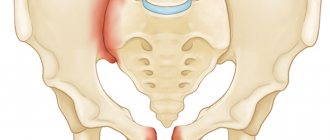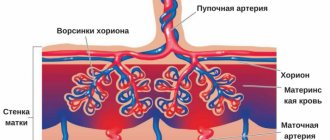Duration and degree of manifestation of toxicosis during pregnancy in early pregnancy: types
As a rule, toxicosis begins at the initial stage of pregnancy. It mainly appears in 1-3 months of pregnancy. Among the main symptoms are:
Signs of toxicosis
Remember that toxicosis is not a disease. The body simply shows such a reaction to changes. Early toxicosis has several degrees of progression:
- First degree. Vomiting can occur up to 5 times a day. Mostly it happens in the morning and after meals. A woman complains of poor appetite and changeable mood, which leads to slight weight loss. In this case, hospitalization is not required.
- Average degree. The number of vomiting increases, up to about 10 times a day. Weight is reduced significantly. There is also an increase in heart rate and temperature. In this case, a specific treatment is already prescribed and it is selected individually.
- Severe degree. This condition is considered dangerous because vomiting is a constant concern. As a result, dehydration occurs and the condition worsens greatly. Metabolism in the body is also disrupted. This situation cannot be avoided without hospitalization.
Of course, even a mild degree in itself is not very pleasant, and therefore it is worth learning how to survive toxicosis and alleviate its symptoms.
How to avoid toxicosis: prevention
If the causes of toxicosis are not pathologies and illnesses (physical abnormalities) of the mother, then compliance with simple rules will help improve the condition:
- timely registration for medical control;
- regular visits to the doctor with tests;
- adherence to daily routine;
- proper diet;
- good sleep;
- regular walks in the fresh air;
- quitting smoking and alcohol;
- gymnastics or yoga for pregnant women.
The expectant mother must understand that from the moment of pregnancy she is responsible not only for herself, but also for the child. You need to be attentive to your body’s signals, respond in a timely manner to changes in your condition, and under no circumstances practice self-medication.
How to relieve toxicosis in early pregnancy: first aid
How to alleviate toxicosis?
Choosing an appropriate way to survive toxicosis in the early stages will relieve symptoms and make your condition easier. The choice of method depends on the duration of the condition. In general, in the early stages, toxicosis can last several weeks. Basically, by 12-13 weeks everything goes away, and therefore many people prefer to simply endure it if their condition allows it. But what if the condition is still unbearable and there is no strength to endure?
As a first aid, proper nutrition can be a good savior. It helps with many diseases, and for pregnant women it is more important than ever. To ensure that severe toxicosis occurs rarely or is not so severe, several rules should be followed:
- Don't eat a lot at one time. It's better to divide your portions and eat little by little. You will have up to 6 meals per day.
- Eat light foods and not too cold or hot.
- If you don’t feel like eating, then don’t do it, otherwise you will only provoke vomiting.
- Avoid fried, spicy, salty and fatty foods for a while.
- It is better not to eat chocolate to eliminate unpleasant symptoms and not cause vomiting.
- Be sure to drink water, it should become your companion throughout your pregnancy. But don't get too carried away. Two liters per day will be enough.
Thanks to these simple rules, it will be easier for you to tolerate toxicosis and it will not become stronger.
Causes of toxicosis
There is no consensus among scientists about the causes and pathogenesis of pathology. No one doubts only one etiological factor - the presence and development of the fertilized egg and its individual components. This is also confirmed by the fact that in cases of their removal for any reason, there is a sharp cessation of toxicosis in the early stages.
With regard to the mechanisms of development of early toxicosis, various theories have been proposed - neurogenic, neuroendocrine, reflex, allergic, immune, corticovisceral. The most popular idea is that toxicosis is a syndrome of maladaptation of the body that arose as a result of rapidly changing conditions of its functioning. Multiple mechanisms are involved in the development of the syndrome, which, if possible, are taken into account when deciding what to do if the pathology develops.
At least a general correct understanding of the mechanisms of development of the disease allows us to understand how to deal with it. In the development of early toxicosis, a major role is played by the functional state of the central nervous system and disturbances in its relationship with the functioning of internal organs, especially the digestive tract. These disorders are expressed in the predominance of excitation processes in the subcortical structures of the central nervous system over inhibition processes.
Most authors associate the predominance of arousal processes with disruption of the functioning of the receptor apparatus of the internal genital organs of a woman, caused by various surgical interventions, previous intoxications and inflammatory diseases, previous abortions, miscarriages, etc.
It is also possible that in the early stages of gestation there is an influence of disruption of the physiological connection between the woman’s body and the trophoblast, the functions of which are implantation of the fertilized egg, provision of embryonic nutrition, binding of maternal antibodies and preventing their entry into the fetal bloodstream.
In the subcortical structures of the brain, in the reticular formation, the medulla oblongata, there are closely interconnected centers of smell, salivation, emetic, respiratory and vasomotor centers.
Due to changes in the receptor apparatus of the uterus or in the nerve pathways, impulses coming from the peripheral parts of the nervous system to the brain (against the background of the predominance of excitation processes) may have a perverted character, which causes an inadequate response from other centers of the brain.
In this regard, vomiting is usually preceded by such symptoms as a feeling of nausea, increased salivation, as well as autonomic disorders in the form of peripheral vascular spasm, manifested by pallor of the skin, increased heart rate and deepening of breathing.
The determining links in the pathogenesis of the disease are considered to be disturbances in neuroendocrine regulation of all types of metabolism, as well as partial or complete starvation and dehydration of the body.
In case of progression of vomiting or salivation, a disorder of water-salt balance occurs with a predominant deficiency of potassium ions, and dehydration gradually increases. Against this background, protein, carbohydrate and fat metabolism are also disrupted, glycogen reserves in the liver and muscles are consumed, catabolism (decomposition) processes are activated, and body weight decreases.
Under these conditions, physiological oxidation of fatty acids is impossible, resulting in the accumulation of under-oxidized fat metabolic products, which leads to an increase in ketone bodies in the blood, the acid-base composition of the blood is disrupted with a shift to the acidic side, and blood oxygen saturation decreases.
These general changes are initially functional in nature. But as they increase, the functions of the liver, kidneys, lungs, heart and central nervous system are impaired.
Autonomic disorders in early pregnancy can also be caused by hormonal imbalance in a woman’s body, in particular due to an increase in the concentration of human chorionic gonadotropin (hCG). This fact is supported by more frequent and also stronger toxicosis in the early stages of pregnancy with multiple pregnancy and hydatidiform mole, in which the levels of hCG in the blood are especially high.
They provoke the development of early toxicosis mainly:
- previous inflammatory diseases of the endometrium and uterine appendages;
- chronic diseases of the stomach, intestines, gallbladder, pancreas;
- other chronic diseases (kidneys, liver, endocrinopathies, etc.);
- helminthic infestations;
- lack of psychological preparation for pregnancy, neuropsychic instability, increased excitability, stressful situations and depressive states (even slightly expressed), previous brain injuries (concussion, bruise);
- hereditary predisposition;
- unstable blood pressure;
- acute infectious diseases;
- excess body weight.
What can you drink for toxicosis during early pregnancy: medications, doctor’s recommendations
Some girls are interested in how to survive toxicosis and what medications can be taken to improve the condition. Although you should not self-medicate, there are still some medications that you can take.
Polysorb
Polysorb during pregnancy
Since doctors associate toxicosis with poisoning, it is logical to assume that drugs can be used to remove toxins. This is exactly what Polysorb is. It is often prescribed by doctors themselves. You can use it 1 tbsp. three times a day. It is better to take the drug 1 hour before or after meals. It is diluted in a glass of water and then applied.
Cerucal
This drug perfectly relieves attacks of nausea. Although doctors are not against using the drug, because it really helps very well, it has one unpleasant feature that is undesirable for pregnant women. The fact is that it makes the uterus toned. This may cause a miscarriage. So the medicine is used only in the most extreme cases. It is acceptable to use 10 mg of the product once a day, but it is better not to do this without a doctor’s prescription.
Navidoxin
Used mainly in Arab countries. Its composition is safe - only B6 or pyridoxine. If you take 10 mg of the drug, the frequency of nausea and vomiting decreases by 70%. There is not much information about this drug and it is not yet used in Russia. So they can only offer you analogues - Pyridoxine or Dicletin.
Zofran
Zofran
One of the most expensive means. For 10 tablets of 8 mg each you will have to pay 4 thousand rubles. It is a highly effective anti-vomiting agent. It is used once a day at 4 or 8 mg. Taking the drug is allowed only as prescribed by a doctor.
Antihistamines
These medications are safe for pregnant women and reduce toxicosis. Doctors usually prescribe:
- Meclozine . Eliminates vomiting, nausea and dizziness. It is prescribed as a last resort, because side effects may occur, for example, drowsiness. Take 25-50 mg.
- Tavegil . Usually doctors prescribe it to older people because they don’t see anything wrong with it. Just keep in mind that the dose must be strictly observed to avoid bad consequences.
Hofitol
The safest drug of all. It facilitates the work of the digestive system, in particular, it triggers a choleretic and diuretic effect. In general, all metabolic processes improve. It is allowed to take 2-3 tablets per day before meals. By the way, drugs to protect the liver, for example, Essentiale, can also be prescribed.
Ginger and mint tablets
Mint tablets
Mint perfectly relieves nausea. So you can put a couple of tablets under your tongue and dissolve them. You cannot take more than 8 pieces per day.
You can also use ginger - it can be the root or capsules. The latter are taken 2 pieces after meals.
Although for the most part anti-toxicosis medications are not dangerous, you should not take them as soon as nausea appears. In mild forms, it is better to do without tablets altogether. If symptoms bother you, it is better to use the following methods recommended by doctors:
- Limit physical activity and get plenty of rest
- Try to sleep at least 8 hours a day
- Eat when you want and little by little, don’t force yourself
- Take a walk outside every day
- Try to avoid strong odors
- Drink more fluids
To avoid causing nausea, do not get out of bed abruptly. It’s better to make a snack right in it, for example, an apple or yogurt. At least water with lemon is enough.
Preeclampsia: manifestations and reasons for seeing a doctor
Late toxicosis is a reason to urgently seek help. It usually begins at 20 weeks and poses a real threat to mother and baby. The causes of late toxicosis are inexplicable, but most often it affects women from the risk group described above. In addition, the deterioration of the condition can be affected by changes of an immune, hormonal, neurogenic and placental nature, reaching their peak by the end of the second trimester.
***
Most often, gestosis is manifested by edema, increased body weight and blood pressure against the background of eclampsia. All these manifestations are called OPG gestosis. Pathology can manifest itself in several forms:
- Dropsy.
- Nephropathy.
- Preeclampsia.
- Eclampsia.
Dropsy is characterized by the formation of persistent edema with the absence of protein in the urine and maintenance of blood pressure within normal limits. The pregnant woman feels normal and does not suffer from nausea or vomiting. In most cases, the pregnancy ends according to its due date.
Nephropathy is manifested by the appearance of protein in the urine, edema, and increased blood pressure. The table describes the three stages of nephropathy with indicators of pressure and protein in the urine.
| Severity | Types of edema | Amount of protein | Arterial pressure |
| First stage | Only the lower limbs are affected | Up to 1 g/l | 150/90 |
| Second stage | Swelling of the lower limbs and anterior abdominal wall | Up to 3 g/l | 170/100 |
| Third stage | The whole body swells | Above 3 g/l | From 170/100 |
Regardless of the stage, the condition is dangerous for mother and child, as it can provoke placental abruption, premature birth or the death of the baby. In particularly difficult cases, nephropathy develops into preeclampsia and eclampsia.
Preeclampsia is characterized by serious problems in the functioning of the nervous system, deterioration in the functionality of the cardiovascular system, with subsequent disruption of the functioning of organs and systems of the whole body. Signs of pathology are:
- migraines and dizziness with fainting;
- blurred vision due to increased blood pressure;
- nausea and vomiting;
- pain in the solar plexus area.
The consequences of this condition can lead to cerebral edema and even death of mother and child. Therefore, it is so important to diagnose the problem in a timely manner and undergo a course of treatment, or to hasten the birth by force.
***
The condition of preeclampsia can progress to an even more life-threatening stage called eclampsia. The pathology is characterized by dangerous disruptions in the functioning of the central nervous system with loss of consciousness, convulsions and coma. A pregnant woman's heart and breathing may stop, and the functioning of any vital organ may stop. The danger is that the deterioration may be sudden and appear against the background of previously described nephropathy or preeclampsia.
Based on all of the above, it remains to be noted that toxicosis ¾ is not as safe a phenomenon as many are accustomed to think. In the early stages, signs of toxicosis can indicate pathologies and the threat of miscarriage; in the later stages, they can become harbingers of the development of gestosis with a danger to the health and life of the mother and child.
How to alleviate toxicosis in early pregnancy: traditional methods, tips
Ginger tea for toxicosis
In the question of how to survive toxicosis, it is worth knowing about folk methods to cope with this unpleasant condition. There are many ways to relieve nausea.
- Mint . An excellent remedy for nausea. Drink mint tea, eat caramels. You will begin to notice how nausea recedes. Just don’t get too carried away and constantly eat mint. One candy is enough for several hours.
- Honey _ It also contains important components for eliminating nausea. Treatment with it is not only healthy, but also delicious. On an empty stomach, it is enough to eat up to 10 grams and that will be enough.
- Rose hip . An infusion of these berries helps relieve nausea. To prepare 1 tbsp. Brew berries in two glasses of boiling water. Infuse the drink for 2 hours in a thermos and you can drink it. It is important to do this correctly - up to half a glass of warm tincture before meals and no more than 3 times a day.
- Chamomile . Buy simple loose chamomile at the pharmacy and make an infusion from it. You will need 2 tbsp. Pour it into a thermos and add 0.5 liters of water. It takes 12 hours to brew and then the drink is filtered. It is enough to drink the infusion three times a day before meals. You can add a drop of honey for taste.
Chamomile for toxicosis
- Infusion of mint or lemon balm . Also steam 2 tbsp. in a thermos and leave. The recipe is the same, but a different plant is used. You can take the infusion three times a day before meals.
- Ginger . It's worth taking if you like the taste. Otherwise, it is better to refuse it. You can eat up to 2 grams of fresh root per day.
- Pumpkin . It is useful not only because it relieves toxicosis, but is also rich in vitamins. Pumpkin can be eaten in any form. Experts recommend making a casserole, but 1 tbsp of broth or juice will be enough.
- Cranberry . Take 150 grams of berries and squeeze the juice out of them. Then boil what remains for 15 minutes. Mix the decoction and juice. Add sugar to remove acid. If you feel nauseous, drink this remedy in small sips.
- Wild sage . You can use fresh or dried grass. 2 tsp steam the herbs in 0.5 liters of boiling water. Infuse the resulting mixture for 3 hours in any warm place and covered with a lid. Don't forget to strain the infusion. Take 50 ml 3 times a day before meals.
Diagnosis of early toxicosis in pregnant women
Often, a diagnosis such as toxicosis in pregnant women is made on the basis of the most common symptoms of the pathology, which include vomiting, nausea and drooling. However, doctors also make sure to conduct additional tests, with the help of which they can rule out other diseases that are characterized by the same symptoms. For example, these diseases can be diseases of the digestive system, infections, diseases of the central nervous system. Of course, toxicosis must be diagnosed as early as possible in order to prevent its further development and complications.
How to survive toxicosis in early pregnancy: reviews from women who have experienced toxicosis
As we can see, there are a lot of recommendations on how to survive toxicosis. It is difficult to say which remedy is right for you, because each organism is unique and the selection of remedies should always be made depending on its characteristics.
Of course, women have significantly different reviews of toxicosis. Some survived the mild stage without any medications and didn’t even feel it, and some even stayed in the hospital for a long time. Absolutely everyone agrees on one thing - the symptoms are very unpleasant, nausea is especially painful, but with the right approach you can get rid of it.
Toxicosis without treatment: what are the complications?
Ignore toxicosis, wait until it goes away on its own, deliberately ignore the deterioration? This is very dangerous and will most likely lead to the development of complications during early toxicosis:
- exacerbation of gastrointestinal diseases;
- severe and dangerous form of dehydration;
- disturbance of water-electrolyte balance.
Lack of a timely response to late toxicosis can lead to:
- to loss of vision;
- malfunctions of organs and systems;
- cerebral edema;
- coma;
- death of mother and child.
Complications can be prevented only by timely contacting the supervising doctor and visiting the antenatal clinic if alarming symptoms occur.











